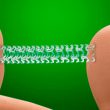Endovascular revascularization has become the main strategy for symptomatic patients with peripheral arterial disease in femoropopliteal territory. Conventional balloon angioplasty is effective in gaining lumen but has a restenosis rate to up 60% at 12 months. Implantation of conventional stents reduced restenosis to almost half, but presented problems such as thrombosis, stent fracture and difficulty...
Angioplasty vs. Surgery in Long-Term Critical Ischemia
Critical ischemia is the most advanced form of peripheral arterial disease, and it is characterized by ischemic rest pain and ulcers or gangrene. Revascularization is obviously positioned as the first-line treatment, and guidelines recommend both possible strategies (surgery or angioplasty) largely based on the findings of the BASIL trial (British Angioplasty versus Surgery in Ischemic...
7 articles on angioplasty that can draw your attention
1) Balloon Angioplasty: A Reasonable Plan B for Chronic Thromboembolic Hypertension Thromboembolic pulmonary hypertension is caused by pulmonary artery stenosis caused by organized thrombi. The only treatment potentially healing for this disease is surgical thrombectomy. However, patients with lesions in very peripheral branches or high surgical risk patients with comorbidities might benefit from a plan B,...
Very Late Thrombosis in Bioresorbable Scaffolds
The presence of a metallic device interrupts normal laminar flow and creates an artery environment that favors thrombosis, leaving the vessel vulnerable to very late thrombosis. Dual antiplatelet therapy, a better implantation technique, and several improvements in new drug-eluting stents (DES) (thinner struts, and higher polymer stability and biocompatibility) have lowered significantly the incidence of...
Bleeding and Mortality in Transcatheter Aortic Valve Replacement
Transcatheter aortic valve replacement (TAVR) is much less invasive than surgical replacement. This is associated with a substantial reduction in bleeding events (up to 60% less). However, clinically relevant bleeding is still present in one every four patients who undergo TAVR, which is associated with morbidity and mortality. Cases of bleeding are not uniform: they may...
A new alternative for PCI of the common femoral artery
Courtesy of Dr. Carlos Fava. Not long ago, atherosclerosis of the common femoral artery used to be treated surgically and, thanks to better training and new balloon devices, we have advanced the endovascular treatment alternative. However, severe calcification continues to be a great limitation. This study aimed at evaluating the feasibility and one year...
Transapical and Transaortic TAVR: Valid Alternatives to the Transfemoral
Courtesy of Dr. Carlos Fava. The femoral approach has been the gold standard for the transcatheter aortic valve replacement procedure (TAVR); however, it is anatomically unsuitable for an important number of patients, and these require a different approach. At present, there is little evidence in support of the transapical or transaortic access sites as...
Transcarotid TAVR Safety: Local or General Anesthesia?
Courtesy of Dr. Agustín Vecchia. Early transcatheter aortic valve replacement (TAVR) was characterized by high vascular complication rates associated to elevated device diameter (e.g. 22-24 Fr. in the first PARTNER) and less operator experience typical of new techniques. This study shows the progress of TAVR field in these last years, the experience gained by...
BVS: Safe and Effective in the Infrapatellar Area
Courtesy of Dr. Carlos Fava. Drug-eluting stents (DES) have shown mid-term benefit in lesions below the knee (BTK) by reducing the rate of acute occlusion and restenosis in type A and B lesions. However, failure to recover the self-regulatory functions of the local vessel could hinder future revascularization. Drug-eluting bioresorbable scaffolds (BVS) could be a solution to this problem....
Coronary Perforation in PCI: Associated to Negative Outcomes
Courtesy of Dr. Guillermo Migliaro. Coronary perforation (CP) is a rare but serious complication of percutaneous coronary intervention (PCI) with an estimated incidence of 0.5%. Arterial blood entering the pericardium may cause a rapid elevation of intrapericardial pressure and collapse the right cavities (tamponade) creating hemodynamic compromise. Historically, surgical drainage has been the...









